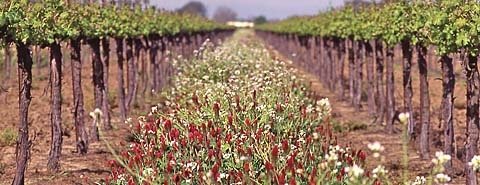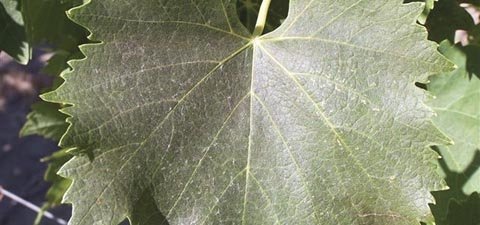Project Description
Pest Control
Featured stories about pest control appear in this issue.
Breakthrough in codling moth control
Dr. Doug Light with the U.S. Department of Agriculture’s Western Regional Research Center in Albany, California, and Dr. Alan Knight with the USDA’s Agricultural Research
RAMP focuses on reduced-risk pest controls
Apples and peaches, high-value crops in eastern United States, were the focus of a regional research project aimed at finding solutions to problems resulting from
Southern Hemisphere apple crop down
Representatives of Southern Hemisphere tree fruit producers report that their 2006 apple crop is 8 percent smaller than last year’s, but their pear crop is
Controlling apple and peach pests without OPs
Results from a reduced-risk pest management research trial in eastern states show that high-quality tree fruit can be grown without organophosphates, but growers can expect
EPA offers help to growers
Sandra Halstead, Agriculture Initiative specialist, oversees a grants program that not only helps growers meet EPA regulations, but gives them a voice in the
Lorsban implicated in pesticide exposure tests
Early season is when orchard workers are most likely to be exposed to cholinesterase-depressing pesticides, judging by Washington State’s cholinesterase-monitoring program, and the pesticide Lorsban
Apple maggot continues to spread
Apple maggot is not difficult to control, but it is a serious problem if found in orchards because it’s a quarantine pest. Apple maggot is
Obliquebanded leafroller displaces pandemis
The obliquebanded leafroller has displaced pandemis as the primary leafroller pest in north central Washington. Mike Doerr, entomologist with Washington State University in Wenatchee, said
You can’t stop drift, but you can reduce the risks
All sprays drift, but pesticide users can reduce the impact of drift by using lower-risk pesticides. Dr. Alan Felsot, environmental toxicologist with Washington State University,
Apple attractant not found yet
Researchers have been unable to duplicate whatever it is in apples that attracts codling moths. Dr. Peter Landolt, research leader at the U.S. Department of
Pest control costs worry growers
Orchardists participating in a research trial that evaluated reduced-risk pest management say that the reduced-risk practices are effective, but they are more expensive and require
Target pear psylla early
A close-up view of psylla honeydew droplets on fruit surface. The most effective time to control pear psylla is early in the season,
Psylla is everyone’s problem
Pear psylla is not an individual orchardist’s problem—it is a neighborhood issue. The pest disperses in the winter and flies back into orchards in the
Small made no small contribution
Orchardist Jim Small of Entiat, Washington, was honored for serving 28 years on the board of the Washington Growers Clearing House Association. Small, who retired
Life after organophosphates
Suitable alternatives to organophosphates are available for Western cherry fruit fly, says a U.S. Department of Agriculture scientist. But achieving complete control with the new
Cherry fruit fly bait attracts large following
A new bait for controlling cherry fruit fly probably saved Washington State growers close to a million dollars last season, according to Tim Smith, Washington
Growers bear gifts and messages for legislators
Jon Wyss of Gebbers Farms (center) and Steve Hull, Washington State Hort Association president (right), tell state Representative Mike Armstrong about labor shortages
Hort Council fills technical issues position
Deborah Carter is the new technical issues manager for the Northwest Horticultural Council, which is based in Yakima, Washington. She comes to her new job
Grants available for mowing prunings
Cost-share grants are available to growers in north central Washington State for disposing of their annual pruning by means other than burning. The Washington State
Rootstocks show resistance to replant disease
A rootstock breeding program that has released seven fireblight-resistant rootstocks shows no signs of slowing down. Thousands more genotypes are in the pipeline for testing
Soft pesticides can be hard on beneficials
Some of the new “soft” pesticides that have been developed in recent years are not so soft on beneficial insects and mites as first supposed,
Letters to the editor
CRISP & COLDThe February 1, 2006, Good Fruit Grower made history. The revolutionary trends in niche variety, and other apple growing are challenging and sudden.
No one likes cheap fruit
Canadian growers who are upset by low apple prices should not get angry at retailers, because retailers don’t like the situation either, produce consultant Michael
Western Washington growers sell direct
Apple growers in western Washington are realizing that their future does not lie in selling their apples through major packers to the wholesale market. “Western
In Our View
Since the federal court decision in March 2003, the Washington Apple Commission has gone through some dramatic changes. The decision of District Court Judge Edward
More pears expected from Argentina
The fruit importer Oppenheimer Group of Vancouver, British Columbia, Canada, expects to bring more pears into the United States from Argentina this season because the
Lodi rules
Crimson clover and alyssum are used as cover crops in this Lodi-Woodbridge vineyard. (Photo courtesy of Lodi-Woodbridge Winegrape Commission) Frustrated by low returns
Partnering with environmentalists
The Lodi-Woodbridge Winegrape Commission worked with Protected Harvest, the third-party certifier, for nearly two years in developing the Lodi Rules for Sustainable Winegrowing. Protected Harvest
Survival means growing better fruit with less labor
Many Washington State tree fruit growers have been slow to adopt technology in the orchard so far, but unless they start making significant changes, their
Ballot shows support for SIR program
British Columbia fruit growers have voted to continue their support for the Canadian province’s innovative but costly codling moth control program. Of 435 eligible ballots
Health message gains importance
The revised USDA food pyramid includes greater emphasis on fruit. Just a few years ago, all that buyers cared about was the appearance
People can afford to pay more for food
People have more cash to spend than ever before, yet spend a shrinking proportion of their income on food. John Mackey, founder of the upscale
Why not fresh-cut pears?
How crisp should a fresh-sliced pear be? Some people like pears soft, while others like them crunchy. The equivalent of more than a
Bin sled improves harvest efficiency
Darrel Oakes uses inexpensive sleds instead of trailers to move bins in the orchard. (Photo by Melissa Hansen) Sometimes the simplest approach is
Direct sales boost LynOaken Farms’s profits
To stay competitive in the fruit industry, some get larger to achieve economies of scale. Others, like one western New York State producer, find ways
The sweet “smell” of pest control
Plants that are under attack emit distress signals to warn neighboring plants they are vulnerable, says WSU entomologist Dr. David James. Exposing plants
New mites detected in Washington vineyards
Bronzing of grape leaves in the summer is a telltale sign of grape rust mite. (Photo courtesy of Washington State University) Wine grape
New controls for cherry pests
Oregon State University scientists, in the search for more selective alternatives to traditional broad-spectrum pesticides, are testing a variety of new reduced-risk materials to assess











